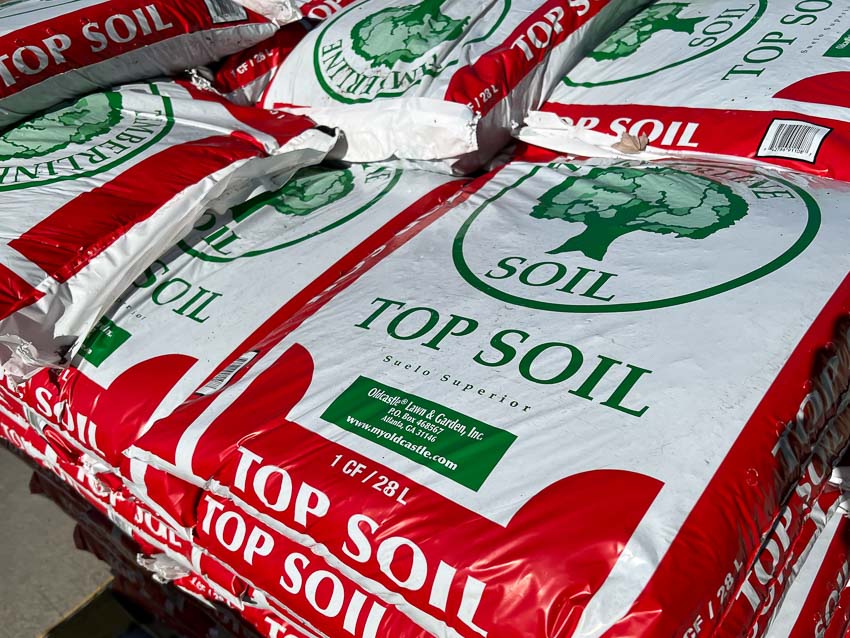A Comprehensive Guide for Homeowners and Gardeners
Topsoil is important for many yard and garden projects because it’s full of the nutrients your plants need to grow. If you’re trying to figure out the topsoil cost for your next project, this comprehensive guide will tell you everything you need to know.
Importance of topsoil for a healthy garden
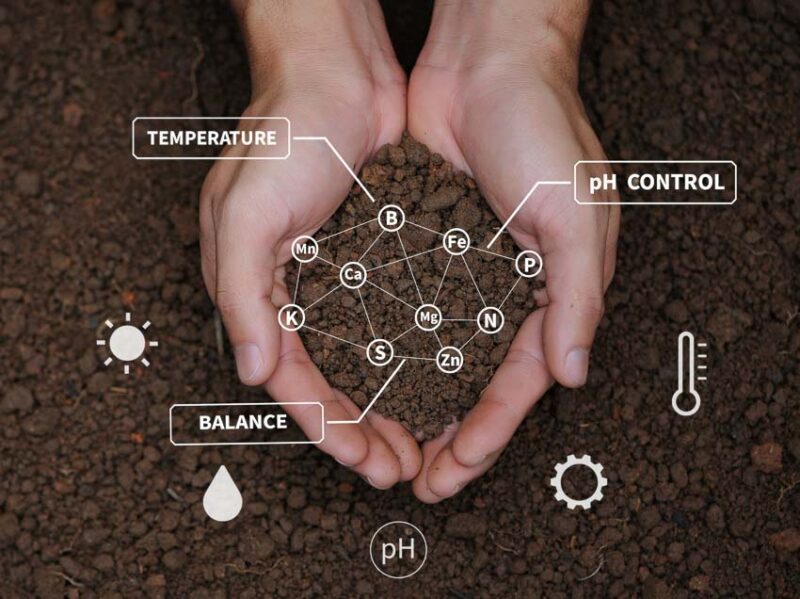
Topsoil forms the basis for a healthy lawn and garden. Rich in organic matter, topsoil provides plants with nutrients. Also, it prevents soil compaction, balances out the pH of your soil, and gives microbes like fungi and earthworms a suitable environment to thrive.
Understanding Topsoil Composition
Topsoil is the first layer of soil, usually extending to a depth of about 5 to 12 inches.
Next, soil occurs in layers called horizons, each with distinct characteristics. These layers cover about 30% of the surface of the Earth, supporting plant and animal life by holding nutrients and water.
Beneath the topsoil is a layer of subsoil.
While topsoil is rich in organic matter that supports biological activity, subsoils are less fertile and don’t contain nutrients in quantities that plants need. As a result, the subsoil horizon is usually light in color and often has a different texture and structure than the topsoil horizon.
In building construction, the excavation process requires the removal of topsoil. When developers build a house, the yard needs a layer of topsoil returned to the surface. This supports the healthy growth of lawns, gardens, and trees.
What is in topsoil?
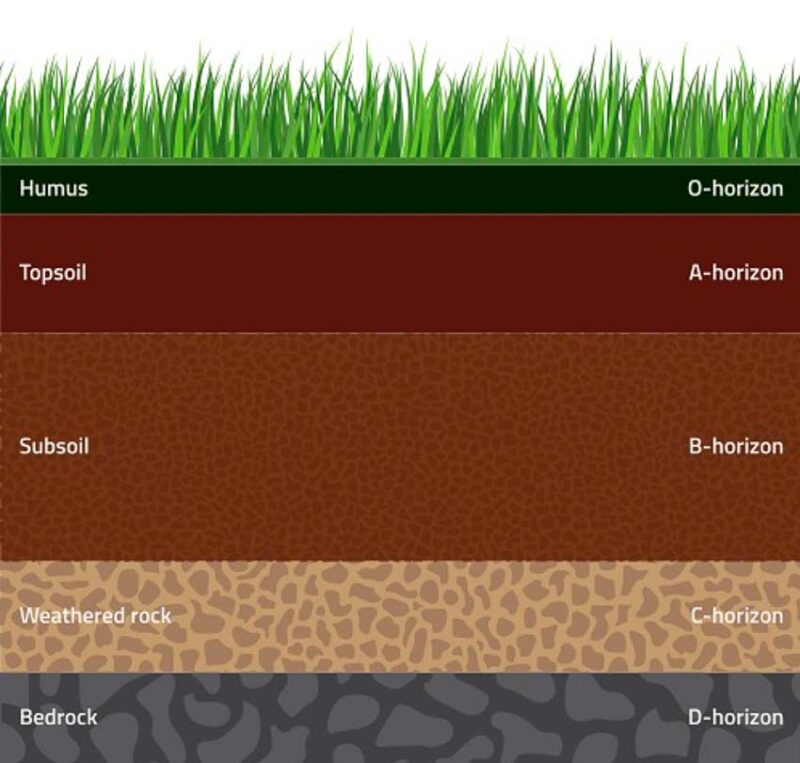
Topsoil is made of minerals and organic matter, with varying amounts of clay, sand, silt, and humus. The amount of organic matter, or humus, determines how rich the soil is, but the minerals influence the structure of the soil.
Topsoil compositions from different regions vary widely, but the best mineral composition for healthy soils is 40% sand, 40% silt, and 20% clay.
The composition of topsoil determines how well it holds water and air, which are necessary for biological activity and the breakdown of organic matter. Humus, which is comprised of decaying plant and animal matter, is rich in carbon and nitrogen. Moreover, it supports the soil organisms and plant roots in the soil.
Healthy topsoil is rich in organic matter, with most agricultural soils having about 3 to 6% organic matter.
Types of topsoil and their costs
There are many different types of topsoil available.
You can improve the soil in your yard by spreading about 4 inches of topsoil. Then till it into your soil to a depth of about 12 inches.
To choose the best topsoil for your yard, test your soil first to determine its type and structure.
Stores usually sell topsoil by the bag or cubic yard (cy), and it varies in price depending on several factors. Dump trucks can usually haul between 10 and 15 cubic yards of topsoil, depending on the truck’s size and weight.
Unscreened topsoil cost–$10 to $25 per cy
The least expensive type of topsoil is unscreened, meaning it’s unmanufactured and processed. However, it contains rocks, sticks, roots, and other debris, and it’s an inexpensive solution for making raised flower beds or filling holes in landscaping.
Screened topsoil cost–$20 to $40 per cy
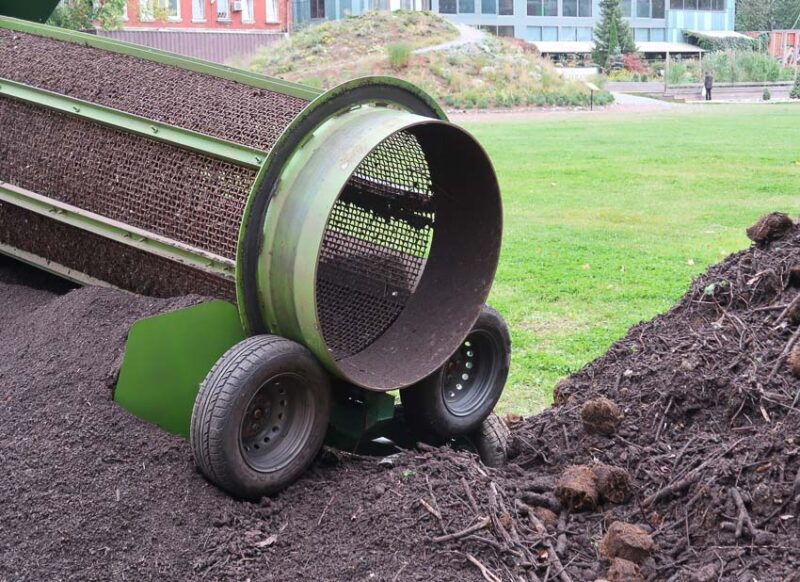
Manufacturers process topsoil through a mesh screen to remove large particles and debris. Its consistent form makes it ideal for applying evenly on lawns and on top of unscreened topsoil.
A ½” screen is the most common for screening topsoil.
Landscape Mix $25 to $40 per yard
When the soil in your yard is mostly clay, a landscape mix of 50% sand and 50% organic matter will make it less sticky and easier to till.
While heavy clay soils are hard and compacted, you can use your hands to easily break apart friable soil. Furthermore, this allows for better root growth and water absorption.
Screened loam topsoil cost–$17 to $25 per yard
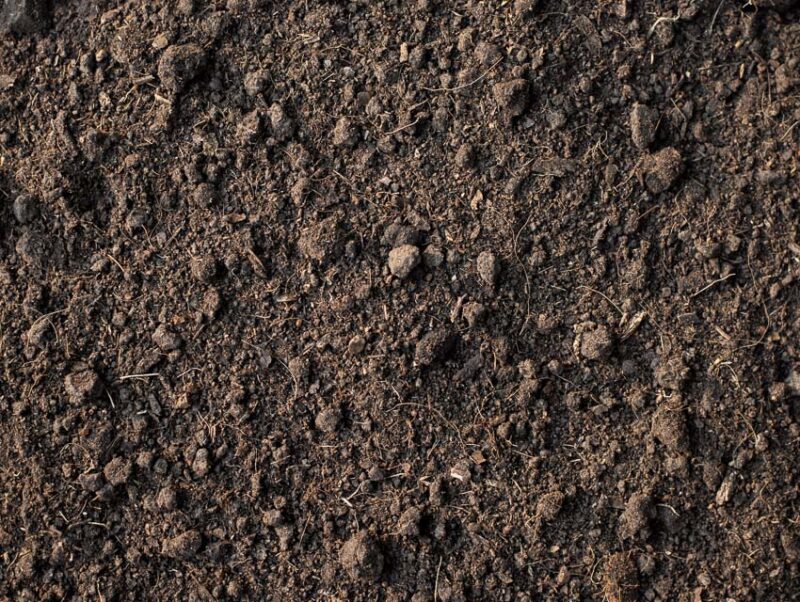
Loam is the ideal topsoil, but not all topsoils contain loam. Loam soils contain more nutrients than sandy soils. They are easier to till than heavy clay soils, and they are highly suitable for most yard and garden plants.
Super loam–$30 to $50 per yard
Screened loam mixed with compost at a ratio of 70/30 or 75/25 loam to compost is considered one of the best topsoils to add to your lawn or garden. It is screened with ½” or ¾” screens, with smaller screened super loam being slightly more expensive.
Planting mixes–$30 to $50 per yard
Organic planting mixes are designed for use in containers and raised garden beds, and they often contain soil amendments like peat moss, vermiculite, perlite, and composted manure.
Black dirt–$15 to $25 per yard
Since sellers often locally source black dirt, it can mean different things in various parts of the country. True black dirt, which comes from poorly drained swamplands in New York, Florida, California, and other regions, gets its dark color from being rich in iron and magnesium.
Organic compost–$20 to $40 per yard
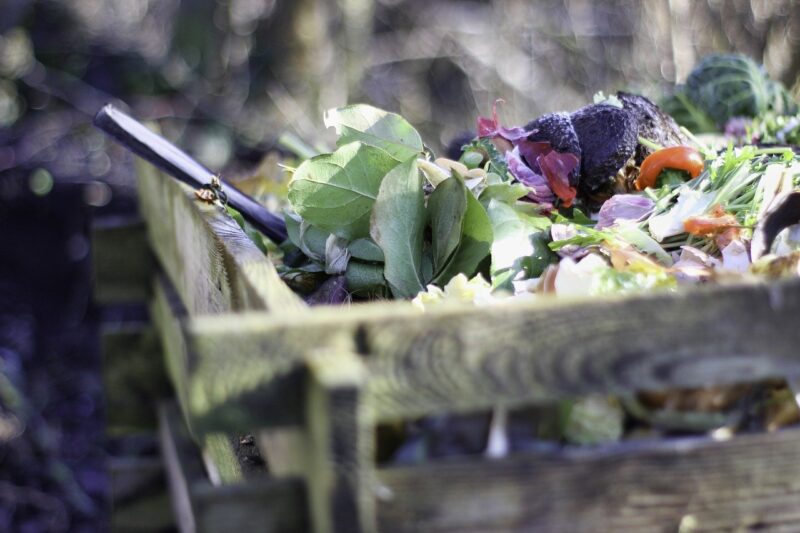
You use organic compost to improve the structure of your soil and increase the nutrient content.
They manufacture this material from organic matter like food waste, manure, decomposing plant debris, grass, and leaves. Also, you can make your own compost at home or buy it in bulk.
Homemade compost is an environmentally friendly way to keep organic waste out of landfills. It is often richer in nutrients than store-bought compost, but you need large quantities to make enough.
Leaf compost–$15 to $30 per yard
Leaf compost has been manufactured or made at home using leaves and grass clippings as primary ingredients. Such compost is considered a soil amendment that improves your soil’s structure, making your soil more attractive to earthworms and other soil microbes.
Steer compost–$30 to $40 per yard
Manufacturers make steer compost manure and other organic materials, and it’s an excellent choice for top-dressing gardens and flower beds.
Mushroom compost–$20 to $45 per yard
A byproduct of farming various types of fungus, you can use mushroom compost as a fertilizer or soil amendment. However, because spent mushroom compost contains salts and other unstable compounds, it is often aged for about two years before being sold to landscape supply companies.
Calculating Topsoil Cost
Several factors affect the cost of topsoil. Learn more about regional price variations and the difference between purchasing bagged and bulk topsoil.
Factors affecting topsoil cost
How much you pay for topsoil depends on several factors, but the price isn’t the only consideration. It’s also important to choose the best topsoil for your gardening needs.
Quantity
Buying in bulk can lead to significant savings if you have a large project.
Quality
The quality of topsoil can vary significantly, especially if you purchase unscreened topsoil. Many landscaping supply companies grade topsoil into three categories: premium, general purpose, and economy.
Location
Topsoil is usually cheaper in rural areas and more expensive in urban and suburban areas, as areas with higher demand often have less topsoil available.
Delivery Fees
Delivery of topsoil usually costs about $100 to $200 per dump truck load, depending on how far your topsoil travels to get to your house. Some landscaping supply companies offer free delivery when you purchase bulk quantities.
Spreading
Many landscaping service companies offer various services, including topsoil delivery and spreading. Expect to pay $50 to $100 per hour for topsoil delivery and spreading services.
Regional topsoil cost variations
Since topsoils are heavy and expensive to transport, companies usually source them locally, and some types of topsoil won’t be available in your region or will cost significantly more. In addition, labor and delivery costs will be higher in regions with a higher cost of living and can affect regional prices.
Bulk vs. bagged topsoil costs
What does a yard of topsoil cost? That depends on how you purchase it.
Buying topsoil by the bag is fine if you have a small project, but for large projects, it’s much less expensive to purchase bulk topsoil, which costs between $10 and $50 per cubic yard.
A 40-pound bag of topsoil contains 0.75 cubic feet of topsoil. Since there are 27 cubic feet in a cubic yard, you would need 36 bags of topsoil to equal one cubic yard.
Topsoil costs $3 to $5 by the bag, which is about $100 to $180 per cubic yard, making it much more expensive for large projects.
Determining How Much Topsoil You Need
How much topsoil do you need for your project? Since buying in bulk can save you so much money, that’s an important question to answer.
A cubic yard of topsoil spread 4 inches thick will cover about 80 square feet. To cover 1,000 square feet at that depth, you need 12.5 cubic yards. To find out how much topsoil you need, use the formulas below.
Measuring your garden area
To determine the size of your garden, measure the length and the width and multiply them together.
Area of a rectangle = length (in feet) times width (in feet)
If your garden is oddly shaped or circular, you should use the formula for a circle to find the area. First, find the diameter, which is the total distance across the largest part of the circle, and divide that by 2 to get the radius.
Area of a circle, using the radius (in feet) = 3.14 (𝛑) times the radius squared
or A=𝛑r2
Using this formula, you can use the area calculated above to determine how many cubic yards you need.
Total cubic yards = Area in square feet) times depth (in feet) divided by 27.
Depth requirements for different plants
Most of the time, you’ll want to spread topsoil about 4 to 6 inches thick, but some plants and applications require more or less topsoil.
| Topsoil application | Recommended topsoil depth |
| Grass | 4 to 6 inches |
| Vegetable garden | 6 to 12 inches |
| Raised beds | 12 inches |
| Tomatoes and potatoes | 8 to 24 inches |
| Flower garden | 3 to 6 inches |
| Trees | 6 to 36 inches, depending on the type and size of the tree |
Online calculators for topsoil estimation
Online calculators are extremely handy for calculating the amount of topsoil you need. Many different sites have these handy online tools to help you calculate how much topsoil you need for your yard, including this one by Inch Calculator .
Spreading Topsoil: Tips and Techniques
Once your topsoil is delivered, it must be spread on your lawn and garden. You can pay a landscaping service company to spread it or do it yourself. Here are some tips and tools that make it easier to ensure even distribution.
Preparing the area
Before you spread topsoil on your yard, prepare the area by removing sticks and rocks with a rake. If you are replanting a lawn, it’s best to get rid of your grass before applying topsoil.
You can use a non-selective herbicide or solarize your lawn if you prefer a more natural method.
Next, till the ground before adding topsoil. You can also till it once again after you have spread the topsoil over your yard to incorporate the nutrients into the top 6 to 8 inches of soil.
Tools for spreading topsoil
The size of your project will determine the best tools for spreading topsoil.
Small projects less than 1,000 square feet
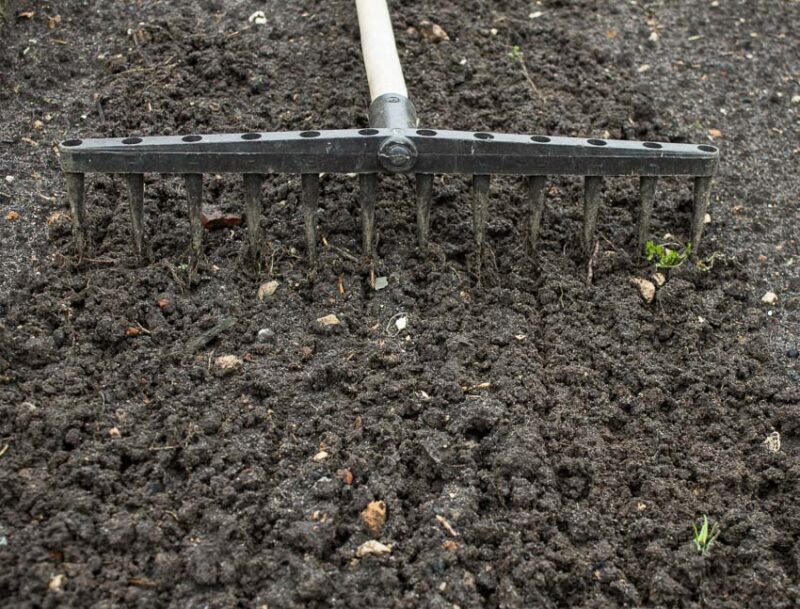
A wheelbarrow, shovel, and hard rake are the best tools for spreading small amounts of topsoil. You might also find tools like a hoe or hand tiller useful when spreading topsoil in small areas.
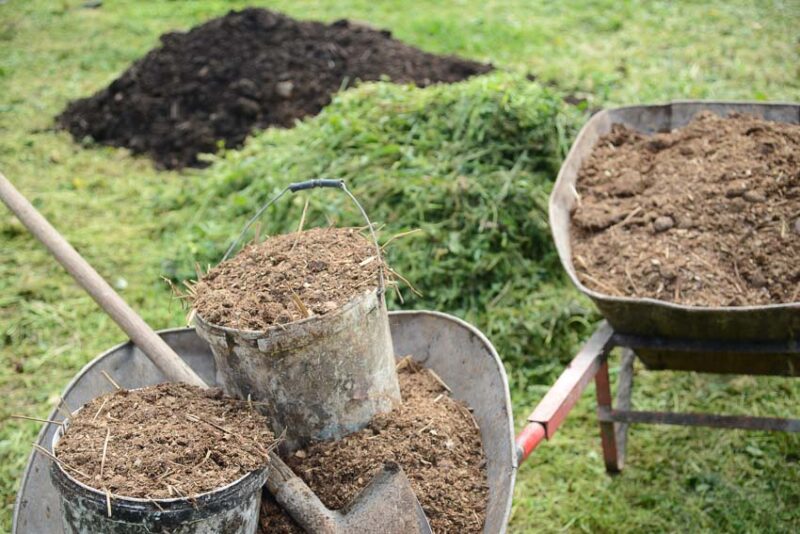
Medium projects up to 5,000 square feet
If you have a large yard project will also affect topsoil cost, as will the tools you need. Consider using heavy-duty landscaping tools such as these:
- 36” landscaping rake –heavy-duty but lightweight, this extra wide rake is useful for smoothing out large areas quickly
- The McCleod tool –a forestry tool with a wide head that is excellent for moving large amounts of dirt around.
- 24” heavy-duty compost spreader –these are useful for spreading topsoil and compost evenly on your lawn
Large projects over 5,000 square feet
Anything over 5,000 square feet is a lot of ground to cover without a riding lawn mower and the right attachments to do the job. If you’re tilling the area, start with a tiller attachment, then use a pull-behind spreader to distribute the topsoil. Follow up by going over it with a 5-foot landscape rake attachment.
Ensuring even distribution
No matter what size project you have, you can use a wide rake to ensure that topsoil is evenly distributed. If your ground is uneven, consider tilling the ground before and after applying topsoil because it will make it easier to level out the ground.
Once you have finished spreading topsoil, water the area thoroughly. The water will help settle the soil and remove air pockets. Then, smooth the area once more, and it will be ready for planting.
Topsoil Cost FAQs
Can I save money by mixing topsoil with other materials?
It depends on what you’re using topsoil for, but you may be able to save money by mixing topsoil with other materials, such as sand or manure. All plants have different nutrient requirements, and you should understand what they are before choosing the best topsoil for your purpose.
How do I know if I need to replace or supplement my existing topsoil?
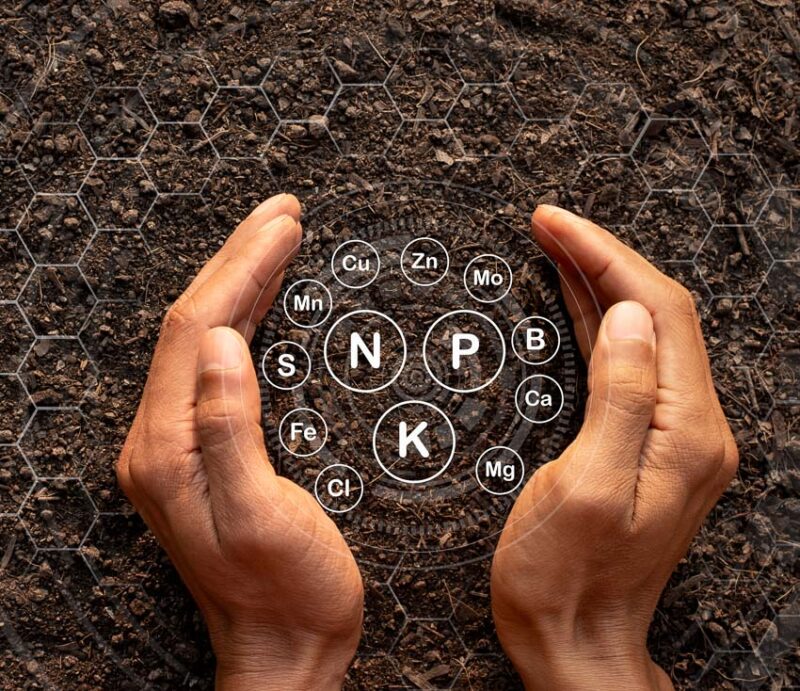
Soil test results will tell you everything you need to know about the health of your soil, including whether or not it needs to be replaced or supplemented. The best soil test results are obtained from laboratories. Contact your local extension office for more information about soil tests.
Is it cheaper to buy topsoil in bulk or in bags?
It’s far cheaper to buy topsoil in bulk than in bags. Bulk topsoil costs about $10 to $50 per cubic yard, and bagged topsoil costs about $100 to $180 per cubic yard. Most landscape supply companies sell topsoil in bulk quantities, but you may not need that much for your project or have space to store it.
What is the best time of year to purchase topsoil?
Topsoil is available all year from many landscape companies, but the best time to spread it is usually in the spring and fall, which is also the best time to plant grass and other landscaping plants.
Can I get topsoil delivered, and what are the associated costs?
Topsoil can be delivered for about $100 to $200, depending on how far it has to go. Many landscape supply companies offer free delivery within a certain distance when you purchase a minimum quantity.
Check out OPE’s article on the Pros and Cons of Rubber Mulch and Dog-Friendly Landscaping!

